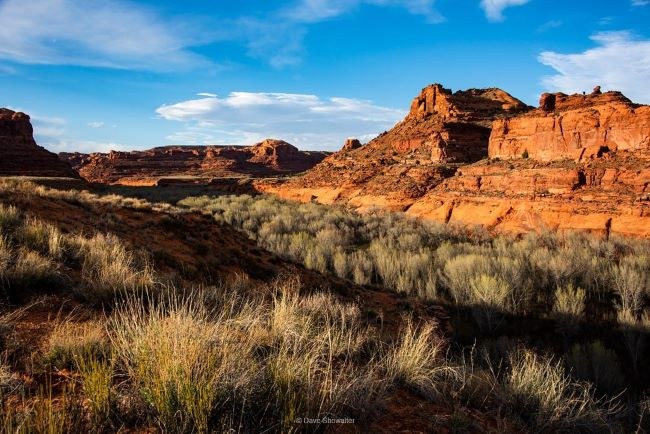
On Friday, President Biden restored protections to three national monuments, including Bears Ears and Grand Staircase-Escalante in southeast Utah. These spectacular landscapes are sacred to Indigenous peoples and contain world-class recreational opportunities. The President used his authority under the Antiquities Act - a bedrock conservation law - to permanently protect these lands as national monuments.
Sacred and Treasured Lands
This region is an amazing landscape: the monuments conserve millions of acres of beautiful canyons, forests, ancient cliff dwellings, and rock formations. The area is sacred to the Indigenous people of the Southwest, including the Hopi, Navajo, Ute, Ute Mountain, and Zuni Tribes. Bears Ears is also home to some of the most notable desert crack climbing in the U.S., including Indian Creek.
In 2017, the previous administration rolled back protections for Bears Ears and Grand Staircase-Escalante, shrinking the two national monuments by 2 million acres. At the time, The Mountaineers decried the action as a dangerous precedent that fundamentally weakened the Antiquities Act. Over 4,000 members of our community responded to our action alerts and joined us in advocating for our national monuments. Many groups, including the Bears Ears Inter-Tribal Coalition, Access Fund, and Outdoor Alliance, have been working to restore protections for the region.
The President’s actions fulfilled a key promise and show a strong commitment to conservation and respecting Indigenous communities. His proclamation restores 2 million acres of public lands and ushers in the opportunity for new management plans and safeguarding sacred sites and threatened species. These actions respect the wishes of Indigenous communities and the overwhelming majority of the American people, who spoke out in the millions to defend the protection of these places.
Protecting the Public Process
While southeast Utah is far from the Pacific Northwest, the fight over Bears Ears is deeply connected to the conservation values of The Mountaineers. We place great value on public input when creating land designations, and believe Bears Ears stands as a model of an inclusive process that included a wide range of stakeholders. The previous administration’s attack on Bears Ears was a direct blow to the public process and our bedrock conservation laws, and represented serious implications for all our nation’s public lands, including those here in Washington.
We’re thankful and relieved to see these protections restored, and we’re grateful to our partners for their tireless work. The work is not done, however, and we remain committed to ensuring that these monuments and all public lands remain protected for generations to come. By advocating together, we can secure equitable outdoor access and a sustainable future for our communities, climate, and the wild places we all love.
If you’re interested in exploring Bears Ears National Monument up close, check out The Best Bears National Monument Hikes by Morgan Sjogren, published by Colorado Mountain Club.
 The Mountaineers
The Mountaineers
